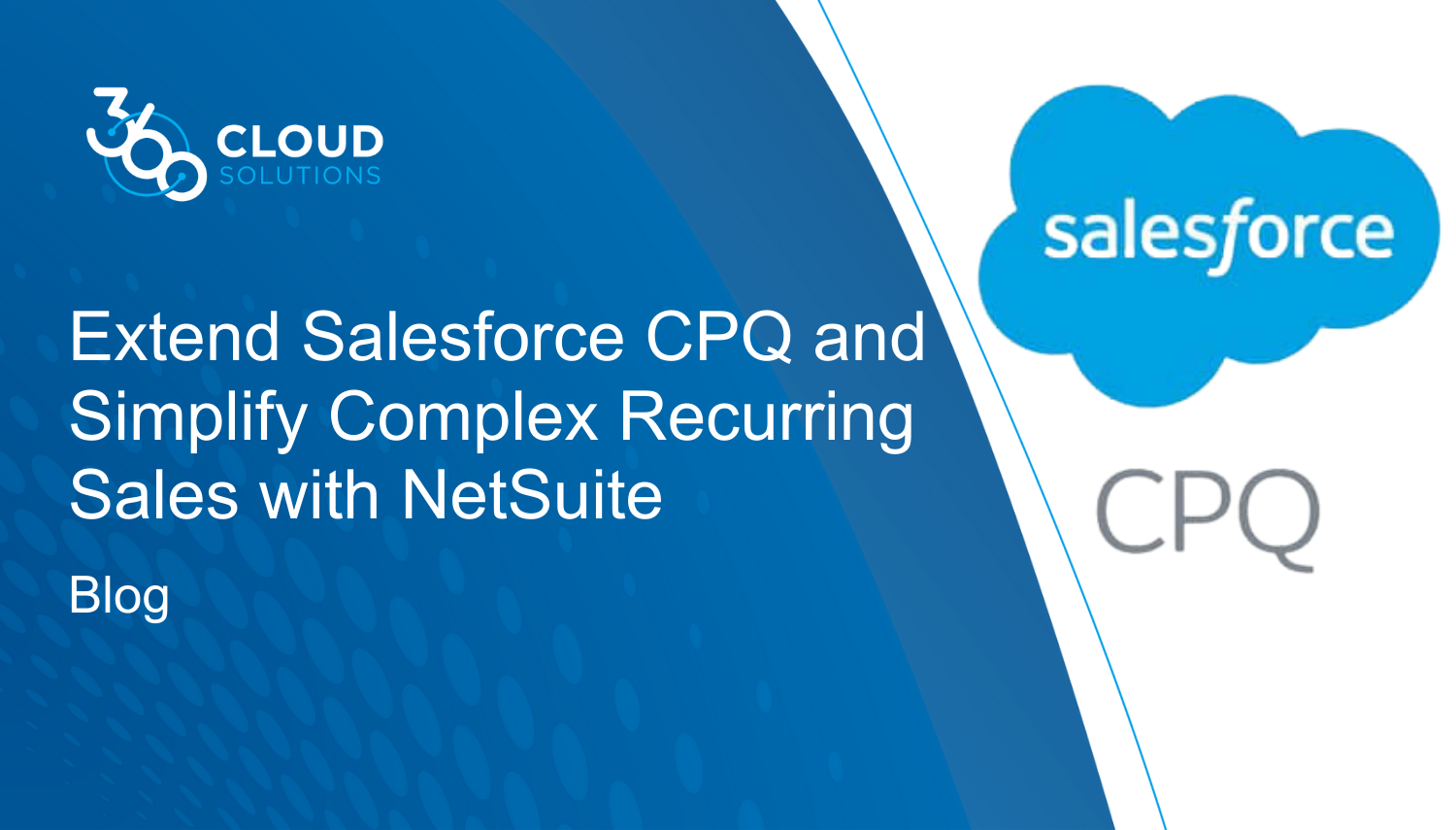
CRM solutions do an excellent job of supporting strong customer relationships, but when it comes time to fully process complex subscription-based orders for their leads, many pros are left struggling to fill the gaps between CRMs and separate financial-focused ERPs. Yet long-term customer relationships may depend upon an organization’s ability to seamlessly move from making a complex subscription quote simpler to reliably fulfilling, billing, amending, and renewing subscriptions on an ongoing basis.
An even bigger challenge is that many growing organizations invest first in a CRM solution to manage leads before implementing an ERP to strengthen their operations, financial management, and reporting. As a result, these organizations find themselves building custom solutions to manage clunky connections across their sales to cash processes – if not dropping the ball entirely.
Fortunately, advanced subscription transaction management solutions are now available to extend Salesforce CPQ and seamlessly align and automate it with NetSuite ERP. By leveraging a subscription transaction integration, organizations can maximize the value of their cloud platforms and grow the benefits they see from both Salesforce CPQ and NetSuite ERP.
What does CPQ mean?
CPQ stands for configure, price, and quote. Solutions like Salesforce CPQ are designed to help sales teams quote accurate pricing for configurable product options and subscriptions.
This type of solution is often invaluable for selling a product and service combination, particularly one that may change over time. After all, manually pricing these changing offerings and calculating discounts can be a complex process that opens businesses up to a risk of error as they key in data. CPQ software streamlines this process. However, this value risks falling apart if an organization isn’t able to move this process from contract to order fulfillment within the same system.
What to expect from an integrated CPQ solution
Organizations turn to Salesforce CPQ with the goal of quickly and accurately configuring, pricing, and generating a quote for complex product and/or service combinations. Yet organizations may struggle in carrying this speed and accuracy into order fulfillment and inventory management, particularly on a recurring basis. Adding piecemeal solutions to connect CPQ with ERP financials solutions can address this gap. However, this generally requires IT professionals to create a custom solution that supports your unique needs, as subscription pricing, terms, billing, and payment scenarios can get complex.
The ideal solution here is a software solution that integrates your full sales channel, from the first contact with a lead through ordering and fulfillment and into subscription sales. Because many companies invest in CRM and ERP solutions at different stages of growth, these systems don’t usually align very well. This alignment is where CPQ integration becomes invaluable.
By extending Salesforce CPQ with a subscription billing integration into NetSuite ERP, companies find they can do more with their contracts and subscriptions. They can increase visibility into recurring revenue metrics or ERP transactions, more effectively manage individual subscriptions, and control how invoices and payments are consolidated, among other functions. It becomes easier to ensure that price amendment or split billing noted in one system is acted upon in the other. And, with a CPQ integration, there’s no need to make expensive changes to back-end systems.
Who is using CPQ?
Subscribe-and-save options have become explosively popular in consumer sales because they meet customers where they are – and add tremendous value to businesses. A relationship with a subscribe-and-save customer is worth exponentially more because it’s a consistent source of revenue that allows for greater inventory predictability.
On the enterprise side, CPQ solutions are making this added value possible in a number of areas. Software as service companies is perhaps the biggest beneficiary of the CPQ approach, as CPQ allows companies to adapt product and service combinations to fit specific enterprise needs. However, CPQ is adding value to a number of emerging players as well.
- Manufacturing companies are now adding timely delivery of products to their value proposition. For example, air filter manufacturers are now selling subscriptions to building managers to provide timely delivery of air filters right when replacement is needed.
- IoT companies might sell access to the data their monitoring solutions gather. That might include patient information gathered by a wearable healthcare device or vehicle data that gives trucking companies information on fleet compliance and upcoming maintenance needs.
- Property management and commercial real estate firms benefit from CPQ solutions that treat rent like the recurring sale that it is while making it easier to apply increases or discounts as needed.
- Professional development firms that offer certifications that may require renewals or ongoing licensing fees can benefit from a subscription approach that builds long-term relationships.
360 Subscription Billing aligns your systems
While a BPR is helpful in driving ERP implementation, the reverse is also true. Many organizations find that undergoing a business process review to identify opportunities for improvement can uncover clear areas where an ERP solution can help reduce duplication of efforts, connect siloed departments, drive down costs, and increase productivity.
However, it is often difficult for an organization to make these business process improvement connections on their own. That’s because the individuals involved in these decisions tend to be very much ingrained in the day-to-day processes that they’re trying to improve. It can be challenging to connect these processes to other departments and the bigger organizational picture. This is where the input of a third-party consultant can be particularly invaluable. These experts are able to bring an objective eye to both BPR and ERP implementation.
Even if you’re not ready to take the step of working with an ERP consultant, a business process review can help you begin to evaluate your existing workflows. Our free business process self-assessment worksheet is designed to help organizations take the first steps toward better understanding current business processes and identify where gaps may be occurring in their operations.



